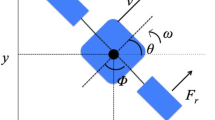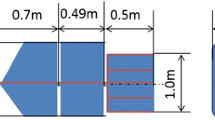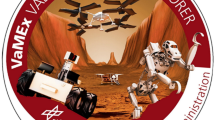Abstract
The balloon robot is made up of balloons and has airship-like functions by filling it with helium. Due to the lower risk of accidents compared to other flying robots, balloon robot is better suited for use in densely populated environments. The control characteristics of the balloon robot are that it does not skid and has non-holonomic constraint in the direction perpendicular to the propulsion direction. This makes the balloon robot difficult to control from Brockett's theorem. One of the methods for controlling a robot with non-holonomic constraints is the time-axis state control. In the previous study, predecessor developed a control law for the motion of the balloon robot in two dimensions space. In this study, we extend this control law to three dimensions space by analyzing the relationship between the pitch angle of the balloon robot and the propulsive characteristics of the pectoral fin motion. We analyze the relationship between the pitch angle of the balloon robot and the propulsive characteristics of the pectoral fins and derive the output of translational velocity and turning angular velocity by changing the motion of the pectoral fins in various ways. Based on the results, we simulate the trajectory of the aircraft.












Similar content being viewed by others
References
Brockett R, Millman R, Sussman H (1983) Differential geomatric control theory. Springer, pp 181–208
Sampei M (1994) A control strategy for a class of non-holonomic systems—time state control form and its application. In: Proceedings of 33rd, conference on decision and control, pp 1120–1121
Kiyota H, Sampei M (1999) Stabilization of nonholonomic systems without drift terms by time-axis state control form. Trans Inst Syst Control Inf Eng 12:647–654
Yamakawa S (2013) Stabilization condition of chained system based on time-based state control. Trans Soc Instrum Control Eng 49(5):499–504
Miyamae H, Hori K, Uchida M (2021) Control system using time-state control form for balloon robot. IEE J Trans Electr Electron Eng 16:412–418
Miyamae H, Uchida M (2019) Constructing a control system using a time-state control form for a fish-type balloon robot. Artif Life Robot 25:316–321
Haga M, Uchida M (2017) Propulsion modeling of caudal fin driving system on balloon fish robot. Artif Life Robot 22:10–16
Author information
Authors and Affiliations
Corresponding author
Additional information
Publisher's Note
Springer Nature remains neutral with regard to jurisdictional claims in published maps and institutional affiliations.
About this article
Cite this article
Kataoka, Y., Uchida, M. Trajectory generation for balloon robot using time-state control form extended to three dimensions space. Artif Life Robotics 27, 506–512 (2022). https://doi.org/10.1007/s10015-022-00757-8
Received:
Accepted:
Published:
Issue Date:
DOI: https://doi.org/10.1007/s10015-022-00757-8




